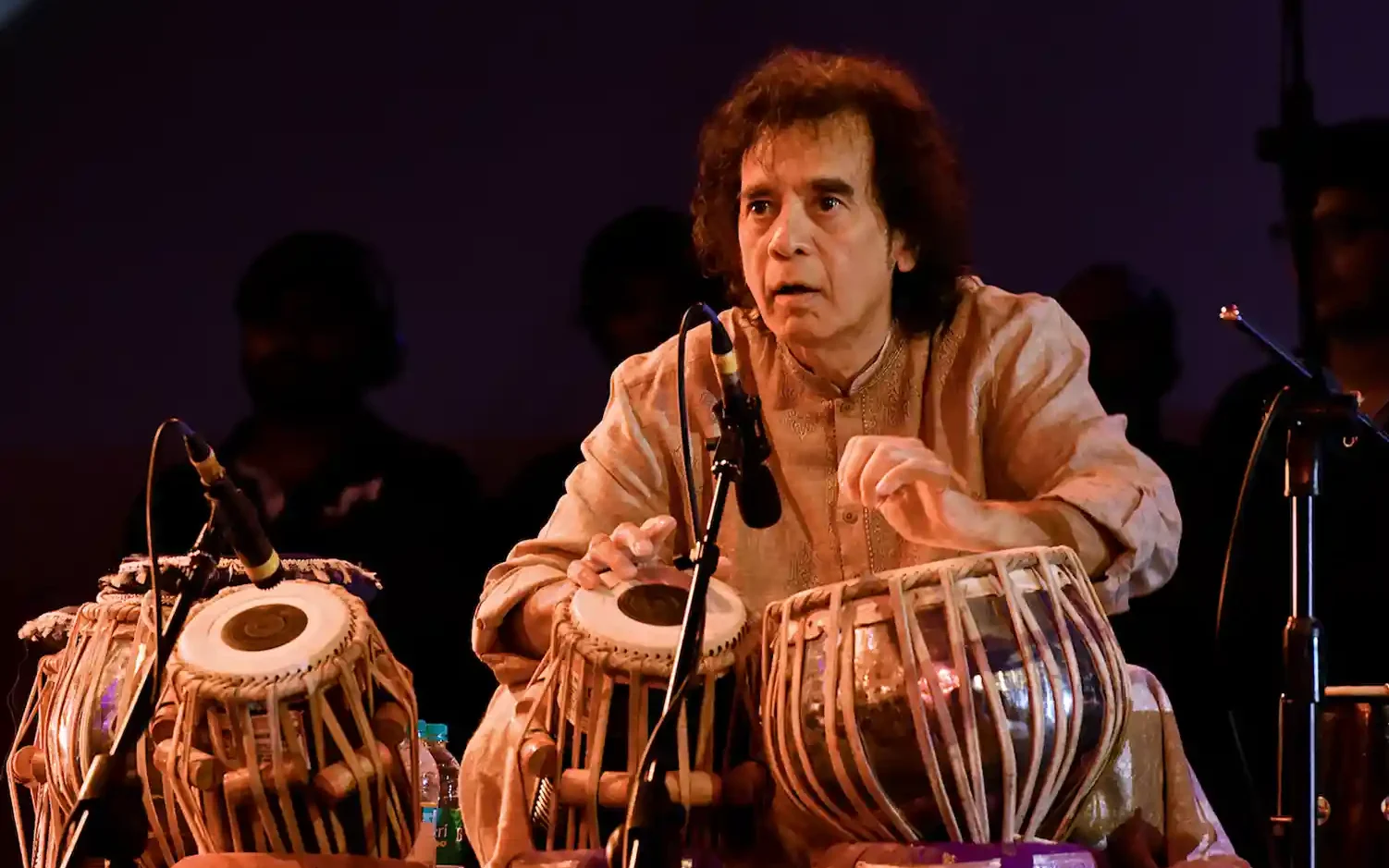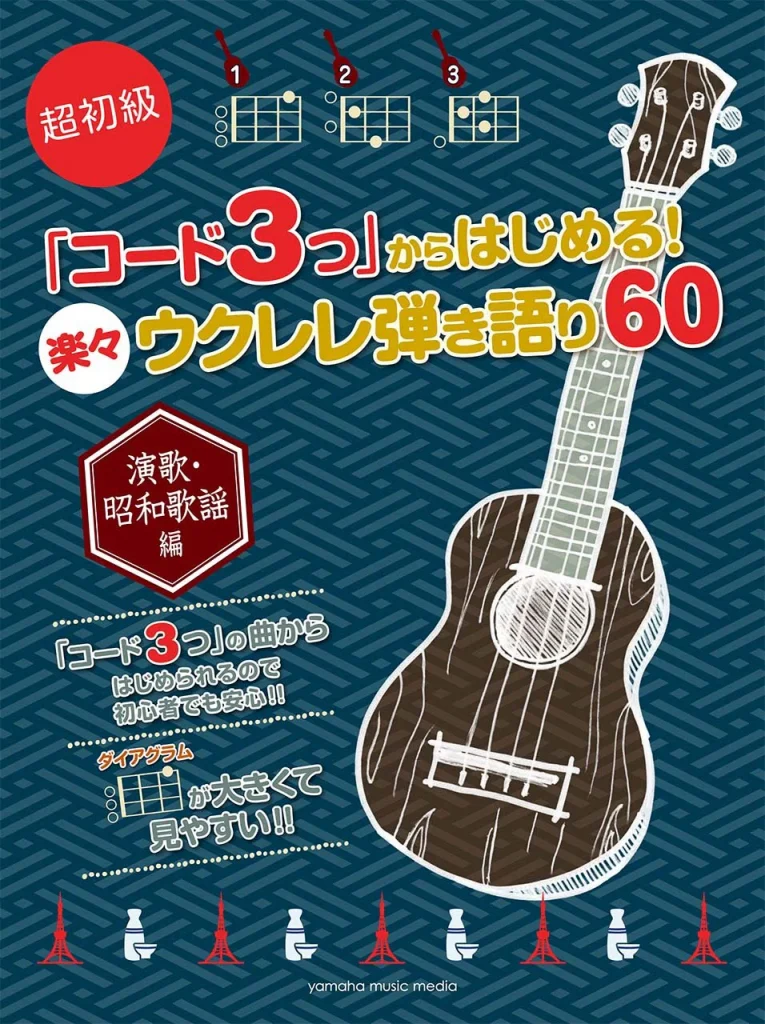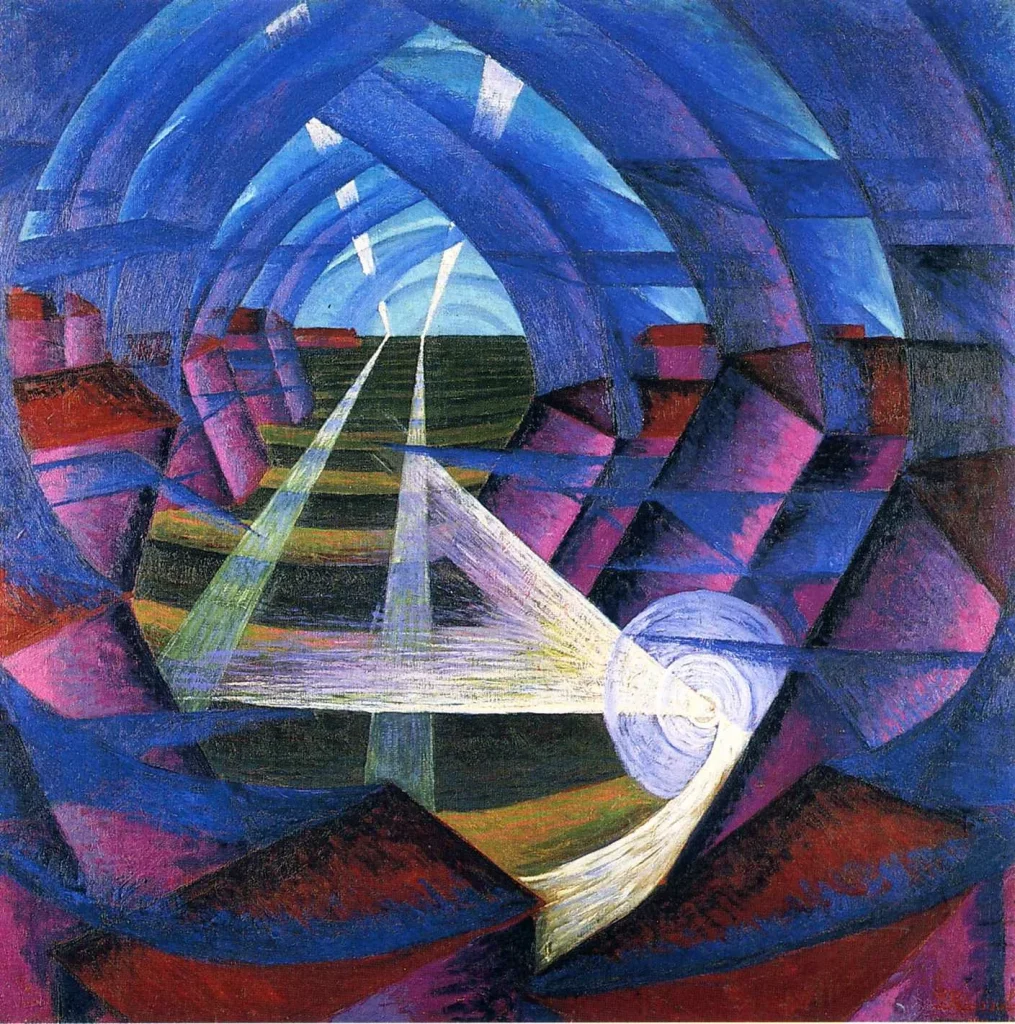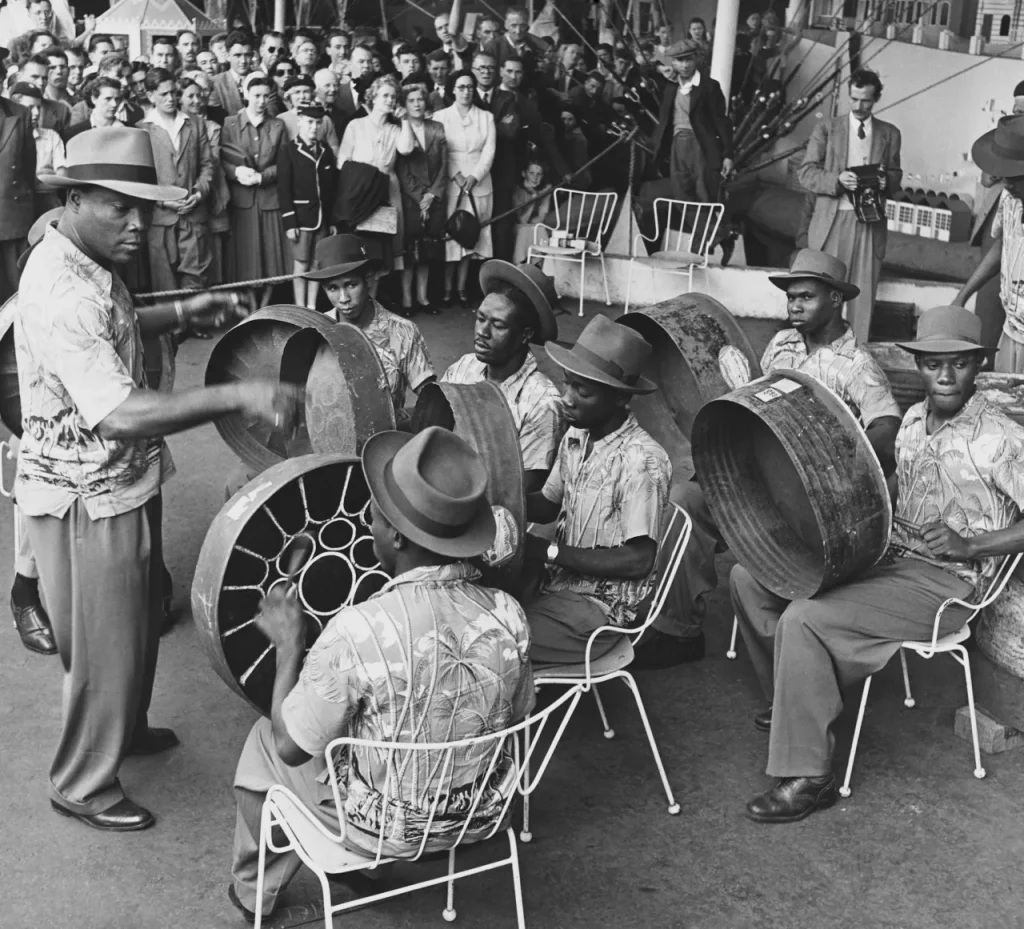The library of the Institut du Monde Arabe (Arab World Institute) in Paris is home to an extensive collection of writings on music from the Arab world, a region stretching from the Atlas Mountains to the Indian Ocean. This series of blog posts highlights selections from this collection, along with abstracts written by RILM staff members contained in RILM Abstracts of Music Literature, the comprehensive bibliography of writings about music and music-related subjects. The Institut du Monde Arabe Museum holds a permanent exhibition of select musical instruments from the Arab world. It features a ṭambūr (frame drum), a darbūkaẗ (drum), a few mizmār (flutes), a qānūn (box zither), and an ʿūd (lute), all on loan from the Musée du Quai Branly, as well as a rabāb (spike fiddle).
The ʿūd has lived countless lives. While empires, caliphates, and sultanates have faded into history, the ʿūd endures—a carrier of musical knowledge and a symbol of civilizations’ legacy whose influence stretches from the shores of Spain in the West to landscapes beyond the Zagros Mountains in the East. The ʿūd has had many shapes and answered to many names. In Iran, it is the barbat; in the Eastern Arab world, the ʿūd; in the Maġrib, the naqlāb and kuwītraẗ; and along the Arab Gulf, the qanbūs. When the ʿūd journeyed to Europe with the musicians of Arab Andalusia (711–1492), it transformed yet again. It acquired new shapes, new roles, and a new reverence, preserving fragments of its name across European languages: laúd in Spanish, liuto in Italian, luth in French, and lute in English. The ʿūd also borrows references to the human body, with its frets stretching on a “forearm” (zind), its strings anchored on a “nose” (anf), and its “face” (wajh) adorned with sound holes named after the “moon” (qamarāt) and the “sun” (šamsiyyaẗ).
Figure 1. The ʿūd of Rabat at the Musée Sidi Mohamed Ben Abdellah, Essaouira [Photography collection of the Institut du Monde Arabe, inv. 99580 (copyright: IMA/MAROC IMAGES). Link to photograph.
In the Arab world, no instrument has been revered as much as the ʿūd that was bestowed with the title of the “sultan of instruments”. Starting in the 9th century, the ʿūd was used to codify music theory. References to the ʿūd date to as early as the 9th century al-Kindī (801?–866?) and evolved through the writings of philosophers and theorists such as al-Farābī (870?–950?), Iẖwān al-Ṣafá (10th century), Ibn al-Munaǧǧim (855?–912), and Ṣafī al-Dīn al-Urmawī (1216?–94). These scholars used the ʿūd as a model to illustrate music theory, conduct mathematical calculations of musical intervals, and analyze the relationships between string length and fingerboard proportions. Intriguingly, philosophical reflections of the era often linked the ʿūd to the cosmological and natural orders. Writings from the Islamic Golden Age (8th through 13th centuries) drew parallels between the ʿūd’s four strings, the four seasons, the four elements of nature, and human temperaments. The four ʿūd strings (bamm, maṯlaṯ, maṯná, zīr) were imagined to resonate with human moods. With that, the ʿūd became a link between human and nature and bore the scholarly concerns with connecting the physical and the metaphysical realms.
Figure 2. An illustration by Ṣafī al-Dīn al-Urmawī of the ʿūd fingerboard demonstrating the place of frets and musical intervals. Source: Kislak Center for Special Collections, Rare Books and Manuscripts LJS 235: Kitāb al-adwār fī al-mūsīqá, https://openn.library.upenn.edu/Data/0001/html/ljs235.html.
In the centuries since its rise in intellectual circles, the ʿūd has been carried in the arms of countless musicians, accompanied singers across genres, and appeared in illuminated manuscripts, ornate miniatures, and decorative artifacts. By the late 19th century, as Arab societies were mobilized during the Nahda era, the Arab Renaissance, the ʿūd was reimagined in shape and use to suit changing aesthetic tastes and sensibilities. The ʿūd was not merely preserved—it became an active participant in the cultural revolution of the time.
The 20th century brought further reinvention, as the ʿūd earned the status of a national symbol. Burgeoning nation-states considered the ʿūd a national hero whose history stretched back in the history of their nations and was to carry the fervor of rapid modernization. The ʿūd reasserted its central presence in art musics across the region: the Andalusian ālaẗ suite of Fès, the mālūf of Algerian Constantine, the waṣlaẗsuite of Cairo and Aleppo, and the Iraqi maqām of Baghdad. The ʿūd was no longer a bridge between humans and the cosmos but represented the musical ideals of entire nations.
Figure 3. A stamp depicting the ʿūd issued by the Republic of Iraq in the 1980s.
After Ziryāb (d. 852?), a polymath and musician of the Abbasid court in Baghdad who fled to Andalusia in the 9th century, graced the ʿūd with its fifth string, adapting it to the demands of new musical styles and planting its roots in Europe, the instrument embarked on a journey that would span centuries and continents. Nearly a millennium later, the sixth string was added, expanding, yet again, the ʿūd’s capacity for expression. And the ʿūd, cradled in the arms of generations, remains as cherished as ever.
The annotated bibliography below introduces the Institut du Monde Arabe’s holdings on the ʿūd as well as musical instruments, and their roles in Arab music.
Annotated bibliography
Abdallah, Tarek. “L’évolution de l’art du ‘ūd égyptien en solo à l’aune du 78 tours” [The evolution of the art of the solo Egyptian ʿūd as featured on 78-rpm records], Revue des traditions musicales des mondes arabe et méditerranéen 4 (2010) 53–66. [RILM Abstracts of Music Literature, 2010-29832; IMA catalog reference]
Presents an analytical study of the evolution of the art of the solo Egyptian ʿūd recorded on 78-rpm records between 1910 and 1930 and the influence of the recording medium on musical forms and the techniques of ʿūd making. The analysis of these recordings shows the impact of the recording format constraints on the development of independent instrumental music, in particular taqsīm and samāʿī. It also permits the development of a typology of playing techniques (the right-hand techniques such as rīšaẗ, octave shifting, and zīr bam; and left-hand techniques such as baṣm), which constitute characteristic signatures of the Egyptian school, and the manner through which soloists mark their style.
Abid, Mohamed. L’o̊ûd oriental: Pratique et méthodes d’enseignement en Tunisie [The oriental ʽūd: Practice and teaching methods in Tunisia] (Villeneuve d’Ascq: Septentrion, 2000) [Doctoral dissertation, Université Paris IV, 1997]. [RILM Abstracts of Music Literature, 1997-55215; IMA catalog reference]
The ʿūd is the central instrument for practical and theoretical application in Arab music. Its history and origins illustrate its long use in performance practice across the Arab world and beyond, and various organological descriptions reveal its varied forms across countries in the region. In Tunisia, masters of ʿūd have developed techniques and repertoire for the instrument that culminated in oral and written pedagogical methods. Excerpts from these methods are included.
al-Ašhab, Muḥammad. تعليم المقامات العربية على الآلات الموسيقية [Teaching Arab maqām on musical instruments] (2nd ed.; al-Dār al-Bayḍā’: [Muḥammad al-Ašhab], 1994). [RILM Abstracts of Music Literature, 1994-36229; IMA catalog reference]
Introduces 21 short exercises of various maqām applied on the ʿūd. The notated exercises are supplemented with illustrations of the fingers and the notes positions on the ʿūd.
al-Baṣrī, Ḥamīd. “بحث في تاريخ آلة القانون وأجزائها” [Research on the qānūn instrument], al-Ḥayāẗ al-mūsīqiyyaẗ/Music life 13 (1996) 31–43. [RILM Abstracts of Music Literature, 1996-44009; IMA catalog reference]
Discusses the history, the development, playing techniques, and the parts of the qānūn.
Bilqazīz, ʿAbd al-Ilāh. “حوار مع مرسيل خليفة” [An interview with Marsīl H̱alīfaẗ], al-Mustaqbal al-ʿarabī 25:285 (Tišrīn al-ṯānī/Nūfambir 2004) 83–97. [RILM Abstracts of Music Literature, 2004-47657; IMA catalog reference]
An interview with Lebanese singer, composer, and ʿūd player Marsīl H̱alīfaẗ about his album Concerto al Andalus, his compositional style, his approach to poetry in composition, his works for the ʿūd, and broader issues related to the history and current state of Arab art music.
Fāẖūrī, Kifāḥ. آلات الموسيقى العربية [Arab musical instruments] (Bayrūt: Šarikaẗ al-Maṭbūʿāt li-l-Ṭibāʿaẗ wa-al-Našr, 1998). [RILM Abstracts of Music Literature, 1998-50327; IMA catalog reference]
Introduces and describes instruments used in Arab music, including the ʿūd, the qānūn, the rabāb, the sanṭūr, the ṭanbūr, the ǧūzaẗ, the kināraẗ, the nāy, the mizmār, the mizmāraẗ, the darbūkaẗ, the riqq, the mizhir, the ṭabl, the ṣāǧāt, the naqqāraẗ, the ṣāǧāt.
Faraḥ, Ğūrğ. I تمارين موسيقية لآلة العود [Musical exercises for the ʿūd. I] (3rd ed., rev. and enl.; Bayrūt: Manšūrāt Dār Maktabaẗ al-Ḥayāẗ, 1985). [IMA catalog reference]
Presents introductory exercises for playing the ʿūd.
Faraḥ, Ğūrğ. II تمارين موسيقية لآلة العود [Musical exercises for the ʿūd. II] (3rd ed., rev. and enl.; Bayrūt: Manšūrāt Dār Maktabaẗ al-Ḥayāẗ, 1985). [IMA catalog reference]
Presents intermediate exercises and compositions for playing the ʿūd.
Faraḥ, Ğūrğ. III تمارين موسيقية لآلة العود [Musical exercises for the ʿūd III] (3rd ed., rev. and enl.; Bayrūt: Manšūrāt Dār Maktabaẗ al-Ḥayāẗ, 1985). [IMA catalog reference]
Presents advanced exercises and compositions for playing the ʿūd.
Farraj, Johnny and Sami Abu Shumays. Inside Arabic music: Arabic maqam performance and theory in the 20th century (New York: Oxford University Press, 2019). [RILM Abstracts of Music Literature, 2019-6370; IMA catalog reference]
What makes hundreds of listeners cheer ecstatically at the same instant during a live concert by Egyptian diva Umm Kulṯūm? What is the unspoken language behind a taqsīm (traditional instrumental improvisation) that performers and listeners implicitly know? How can Arabic music be so rich and diverse without resorting to harmony? Why is it so challenging to transcribe Arabic music from a recording? These questions are addressed from the perspective of two “insiders” in the practice of Arab music by documenting a performance culture and a know-how that is primarily passed on orally. Arab music has spread across the globe, influencing music from Greece all the way to India in the mid-20th century through radio and musical cinema and global popular culture through raqs šarqī, known as “belly dance” in the West. Yet despite its popularity and influence, Arab music, and the maqām scale system at its basis, remain widely misunderstood. Understanding maqām requires an approach that draws theory directly from practice and presents theoretical insights that will be useful to practitioners, from the beginner to the expert, and those interested in the related Persian, Central Asian, and Turkish makam traditions. The discussion of maqām and improvisation widens the general understanding of music as well, by bringing in ideas from Saussurean linguistics, network theory, and Lakoff and Johnson’s theory of cognition as metaphor, with an approach parallel to Gjerdingen’s analysis of Galant-period music–offering a lens into the deeper relationships among music, culture, and human community. [synopsis by the publisher]
Ḥamīd, ʿAbd al-ʿAzīz. “العود في الآثار العربية” [The ʿūd in Arabic sources], al-Mūsīqá al-ʿarabiyyaẗ 1 (Tammūz/Yūlyū 1998) 11–44. [RILM Abstracts of Music Literature, 1982-49223; IMA catalog reference]
The use of the ʿūd can be traced in Arabic literary sources before Islam. Manuscripts that survived from the Abbasid period (750–1258) contain writings on the instrument by philosophers and music theorists and provide depictions of the ʿūd, its shapes, and uses.
al-H̱ulaʿī, Muḥammad Kāmil. كتاب الموسيقى الشرقي [The book of Oriental music] (al-Qāhiraẗ: al-Dār al-ʿArabiyyaẗ li-l-Kitāb, 1993). [RILM Abstracts of Music Literature, 1993-32078; IMA catalog reference]
According to traditional Arab music theory, music should be studied as two branches: melody (laḥn) and rhythm (īqāʿ). Sound and its physical characteristics, tones and intervals and their types, transposition, and what makes plausible intervals and tones, are also important topics in music theory. Performance styles in Egypt in the 19th and early 20th centuries reflect the broader social and aesthetic changes. Arrangements of 23 performance cycles of muwaššaḥāt with transcription of their poetry and rhythmic cycles are included. Biographies, chronicles, and selection from the repertoires of musicians serve as a rich reference for the musical and literary life of the period. The musicians include Aḥmad Abū H̱alīl al-Qabbānī, ʿAbduh al-Ḥāmūlī, Muḥammad ʿUṯmān, Muḥammad ʿAbd al-Raḥīm al-Maslūb, Muḥammad Sālim (al-Kabīr), Yūsuf al-Manyalāwī, Ibrāhīm al-Qabbānī, Salāmaẗ Ḥiğāzī, and Muḥammad Kāmil al-H̱ulaʿī.
Loopuyt, Marc. Le oud Nahhât: Luth mythique de Damas (Paris: Musée de la Musique, 2018). [RILM Abstracts of Music Literature, 2018-63384; IMA catalog reference]
Repository of a thousand-year tradition in which geometry, philosophy, and poetry conjoin, the ʿūd made in the 1930s by the luthier ʿAbduh Naḥḥāt in Damascus is a window on the art and the knowledge of the Arab world.
al-Mahdī, Ṣāliḥ. إيقاعات الموسيقى العربية وأشكالها [Arab music rhythms and forms] (Qartāğ: Bayt al-Ḥikmaẗ, 1990). [RILM Abstracts of Music Literature, 1990-43850; IMA catalog reference]
Īqāʿ (rhythm) is a defining feature of Arab music, its poetry, and musical and vocal forms. The relationship between poetic meter and rhythm in Arab music is of great importance, especially as it provides the foundation of many musical forms. Special attention is given to the art of ṣawt in the Arab Gulf, the nawbaẗ from the Arab Maghrib, the dawr, the muwaššaḥ, and instrumental forms such as bašraf, taḥmīlaẗ, samāʿī, and sīrtū. Arab music rhythms were documented in the recordings of the 1932 Cairo Congress of Arab Music. Selections of compositions recorded during the congress are discussed.
Poché, Christian. Musiques du monde arabe: Écoute et découverte (Paris: Institut du Monde Arabe, 1994). [RILM Abstracts of Music Literature, 1994-21319; IMA catalog reference]
Presents an overview of the music of the Arab world, including repertoires, instruments, melodies, rhythms, and forms. The 25 musical examples illustrate the text and allow learners to complete the 82 proposed exercises. An answer key accompanies each of these exercises. Bibliographic references, an iconography of instruments, a glossary of terms, and a select discography complete this guide, whose objective is to facilitate the understanding and appreciation of Arab music.
Poché, Christian. “Le joueur magnifique” [The magnificent musician], Qantara 26 (hiver 1997-98) 22-24. [RILM Abstracts of Music Literature, 1997-55262; IMA catalog reference]
Munīr Bašīr was an ʿūd master who introduced new techniques and aesthetics to the playing of the instrument. His interpretation of the Arab maqām and his improvisations marked an important milestone in modernizing Arab music.
Poché, Christian. “Oud: Histoire de l’instrument qui voulait jouer tout seul” [The ʿūd: A history of the instrument that plays on its own], Qantara 35 (printemps 2000) 23–25. [RILM Abstracts of Music Literature, 2000-84943; IMA catalog reference]
In the context of modernization efforts throughout the 20th century, the ʿūd experienced significant stylistic and technical transformations. In the early 20th century, ʿūd masters in Turkey–such as Şerif Muhiddin H. Targan (1892–1967), Udi Hırant (1901–78), and Yorgo Bacanos–and in Egypt, including Muḥammad ʿAbd al-Wahhāb, played pivotal roles in developing a unique approach to the instrument within their respective musical scenes. In the latter half of the century, ʿūd players Ǧamīl Bašīr, Munīr Bašīr, Salmān Šukr, and Marsīl H̱alīfaẗ contributed to this evolution by introducing modernist elements that redefined the ʿūd ’s role and expression within Middle Eastern musical traditions.
Qaṭṭāṭ , Maḥmūd. آلة العود بين دقة العلم وأسرار الفن [The ʿūd: Between the accuracy of science and the secrets of art] (Masqaṭ: Markaz ʿUmān li-l-Mūsīqá al-Taqlīdiyyaẗ/Oman Center for Traditional Music, 2006) [RILM Abstracts of Music Literature, 2006-52600; IMA catalog reference]
The ʿūd is an ancient Middle Eastern instrument that has endured through the ages, thriving and earning its reputation as the sultan of instruments. Its history is marked by significant changes in organology, size, and use, with many adaptations shaping its evolution. Archaeological evidence reveals depictions of various lute-like instruments dating back to the 3rd century B.C.E. in the Near East and Central Asia. By the medieval Islamic period, the ʿūd had reached a remarkable stage of development, undergoing further refinement in both construction and playing techniques, reaching its peak in the 10th century. During that time, it was used in performance and as a tool for studying music theory and exploring the philosophical dimensions of music. These references are found in manuscripts, archaeological artifacts, decorative objects, and illuminations, with connections to music and a range of other topics, including science, society, and literature. The introduction of the ʿūd to Europe, facilitated by the Muslim rule in Andalusia, also impacted the development of the lute in Europe, influencing both instrument construction and music theory. In the 20th century, master ʿūd players have embraced new enhancements and innovations, influenced by the modernization of music and the adoption of forms from Ottoman musical tradition. Today, the ʿūd is used across various genres in the Arab world, known by different names across the cultural regions of the Arab Mašriq, Iraq, the Arabian Peninsula, and the Maghrib. Each area has distinct variations in the ʿūd’s shape, playing techniques, and repertoire. Modern instrument developments, including string construction and crafting techniques, have accompanied the rise of new performance schools.
Saḥḥāb, Fiktūr. السبعة الكبار في الموسيقى العربية المعاصرة: سيد درويش، محمد القصبجي، زكريا أحمد، محمد عبد الوهاب، أم كلثوم، رياض السنباطي، أسمهان [The seven wonders of contemporary Arab music: Sayyid Darwīš, Muḥammad al-Qaṣabǧī, Zakariyyaẗ Aḥmad, Muḥammad ʿAbd al-Wahhāb, Umm Kulṯūm, Riyyāḍ al-Sunbāṭī, Asmahān] (Bayrūt: Dār al-ʿIlm li-l-Malāyīn, 2001) [RILM Abstracts of Music Literature, 2001-48847; IMA catalog reference]
The 19th and early 20th centuries brought rapid modernization to Egypt, with technological and cultural shifts that profoundly impacted musical life. By examining the musical contributions of eight masters from the first half of the 20th century, often regarded as the golden age of Arab music, we gain insight into the evolution of Arab musical forms, the emergence of new styles, as well as about political upheavals, all of which still continues to shape Arab music today. The biographies, anecdotes, works, compositional processes, stylistic characteristics, and political engagements of these influential singers, instrumentalists, and composers are analyzed.
Ṣafadī, Rūbīr. تاريخ الموسيقى العربية [The history of Arab music] (Bayrūt: Dār al-Fikr al-ʿArabī, 2004). [RILM Abstracts of Music Literature, 2004-46854; IMA catalog reference]
In the first three decades of the 20th century in Egypt, music making was marked by the work and performance practice of musicians, composers, and singers who laid the foundation of Arab music aesthetics. The main master musicians of that period were: Muḥammad ʿUṯmān, ʿAbduh al-Ḥāmūlī, Salāmāẗ Ḥiǧāzī, Abū al-ʿIlā Muḥammad, Dāwūd Ḥusnī, Muḥammad al-Qaṣabǧī, Sayyid Darwīš, and Zakariyyā Aḥmad. The following two decades witnessed the introduction of changes and innovation in Arab art music. The most prominent figures of that period were Muḥammad ʿAbd al-Wahhāb and his contemporaries including Maḥmūd al-Šarīf, Farīd al-Aṭraš, Ḥalīm al-Rūmī, Ǧalāl Ḥarb, ʿAbd al-ʿAzīz Maḥmūd, Muḥammad Fawzī, and Midḥat ʿĀṣīm. ʿAbd al-Wahhāb’s career, his style of composition, and the songs and music he composed for films attest to his contribution to Egyptian music and cinema. Starting in the 1950s, a new generation of musicians and composers drew on the aesthetics of the early period of modernization. The works of Lebanese musicians and composers also had a great impact on the development of Arab music. Biographies of musicians and excerpts of lyrics of select composers and singers are included.
al-Sibāʿī, ʿAbbās Sulaymān. العود العربي وتجربته على النغمة الخماسية في السودان [The Arab ʿūd and the Sudanese pentatonic scale] (al-H̱arṭūm: Manšūrāt al-H̱arṭūm, 2007) [RILM Abstracts of Music Literature, 2007-54096; IMA catalog reference]
The ʿūd was a subject of study among philosophers of medieval Islam, including al-Kindī, al-Farābī, Isḥāq al-Mawṣilī, Ibn Sīnā, and Ziryāb. In Sudan, the introduction of the Arab ʿūd occurred in the early 20th century and had attracted significant interest. The ʿūd was adapted to play pentatonic music traditionally known in the country. Detailed descriptions of the craftsmanship of the ʿūd, as well as its technical and aesthetic aspects, are provided. Selected compositions by Barʿī Muḥammad Dafʿ Allāh, al-ʿĀqib Muḥammad Ḥasan, ʿAlī Makkī for the ʿūd are also featured. Additionally, the transcription of melodic excerpts and the application of Sudanese pentatonic modes, along with distinctive playing styles and techniques on the ʿūd are examined. Exercises for the ʿūd and scores of well-known Sudanese melodies and songs are included, providing a practical resource for students and musicians.
Makhlouf, Hamdi. Métamorphoses du ʿūd: De l’organologie á l’espace compositionnel [Metamorphoses of the ʿūd: From organology to compositional space] (Sīdī Bū Saʿīd: Ennejma Ezzahra: Centre des Musiques Arabes et Méditerranéennes;Tunis: Éditions Sotumédias, 2020). [RILM Abstracts of Music Literature, 2020-76947; IMA catalog reference]
The morphological evolution of the ʿūd from antiquity to the present established a foundation for understanding the ʿūd both as a material object and as an influential element in musical culture and provided the background of a semantic analysis of modern compositional techniques and styles. The epistemological framework of the compositional space for the ʿūd is structured on three levels: knowledge attained through listening, formal structuring, and semantic interpretation. Close analyses of a taqsīm by Ǧamīl Bašīr, and compositions by Munīr Bašīr (al-ʿUṣfūr al-ṭā’ir), Le Trio Joubran (Masār), and Naseer Shamma (Ḥadaṯ fī al-ʿāmiriyyaẗ) are presented.
Vigreux, Philippe. La derbouka: Technique fondamentale et initiation aux rythmes arabes [The darbūkaẗ: Basic technique and introduction to Arab rhythms] (Paris: Edisud, 1985). [RILM Abstracts of Music Literature, 1985-31342; IMA catalog reference]
Rhythm in Arab music is discussed through its quantitative (time unit, measure, and rhythmic cycle) and qualitative (accentuation and ornamentation) aspects. Fundamental techniques of the darbūkaẗ are explained through illustrative images and notated practices of basic rhythms and their applications.
Written and compiled by Farah Zahra, Associate Editor, RILM

























